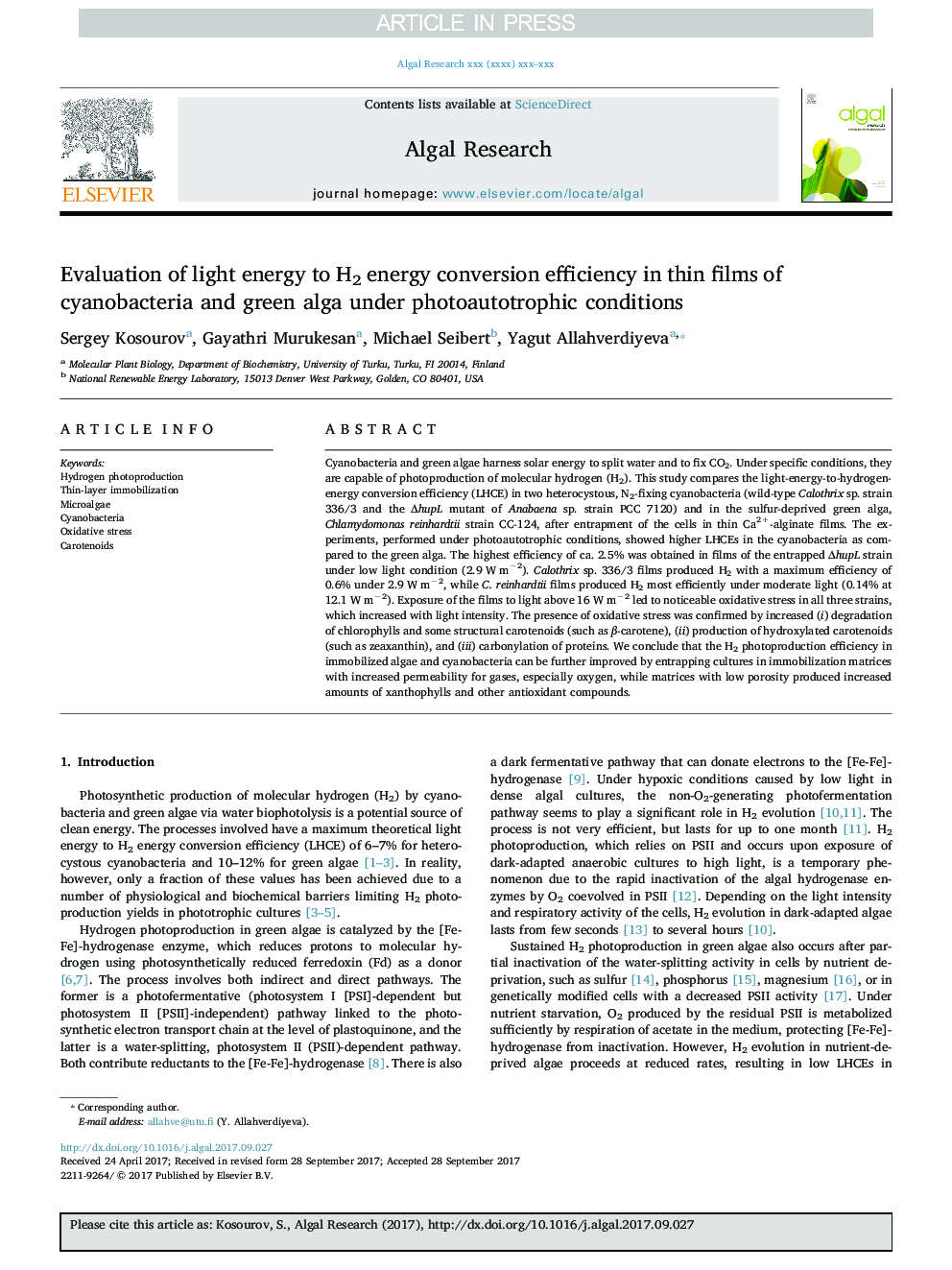| Article ID | Journal | Published Year | Pages | File Type |
|---|---|---|---|---|
| 8086367 | Algal Research | 2017 | 11 Pages |
Abstract
Cyanobacteria and green algae harness solar energy to split water and to fix CO2. Under specific conditions, they are capable of photoproduction of molecular hydrogen (H2). This study compares the light-energy-to-hydrogen-energy conversion efficiency (LHCE) in two heterocystous, N2-fixing cyanobacteria (wild-type Calothrix sp. strain 336/3 and the ÎhupL mutant of Anabaena sp. strain PCC 7120) and in the sulfur-deprived green alga, Chlamydomonas reinhardtii strain CC-124, after entrapment of the cells in thin Ca2+-alginate films. The experiments, performed under photoautotrophic conditions, showed higher LHCEs in the cyanobacteria as compared to the green alga. The highest efficiency of ca. 2.5% was obtained in films of the entrapped ÎhupL strain under low light condition (2.9 W mâ2). Calothrix sp. 336/3 films produced H2 with a maximum efficiency of 0.6% under 2.9 W mâ2, while C. reinhardtii films produced H2 most efficiently under moderate light (0.14% at 12.1 W mâ2). Exposure of the films to light above 16 W mâ2 led to noticeable oxidative stress in all three strains, which increased with light intensity. The presence of oxidative stress was confirmed by increased (i) degradation of chlorophylls and some structural carotenoids (such as β-carotene), (ii) production of hydroxylated carotenoids (such as zeaxanthin), and (iii) carbonylation of proteins. We conclude that the H2 photoproduction efficiency in immobilized algae and cyanobacteria can be further improved by entrapping cultures in immobilization matrices with increased permeability for gases, especially oxygen, while matrices with low porosity produced increased amounts of xanthophylls and other antioxidant compounds.
Related Topics
Physical Sciences and Engineering
Energy
Renewable Energy, Sustainability and the Environment
Authors
Sergey Kosourov, Gayathri Murukesan, Michael Seibert, Yagut Allahverdiyeva,
